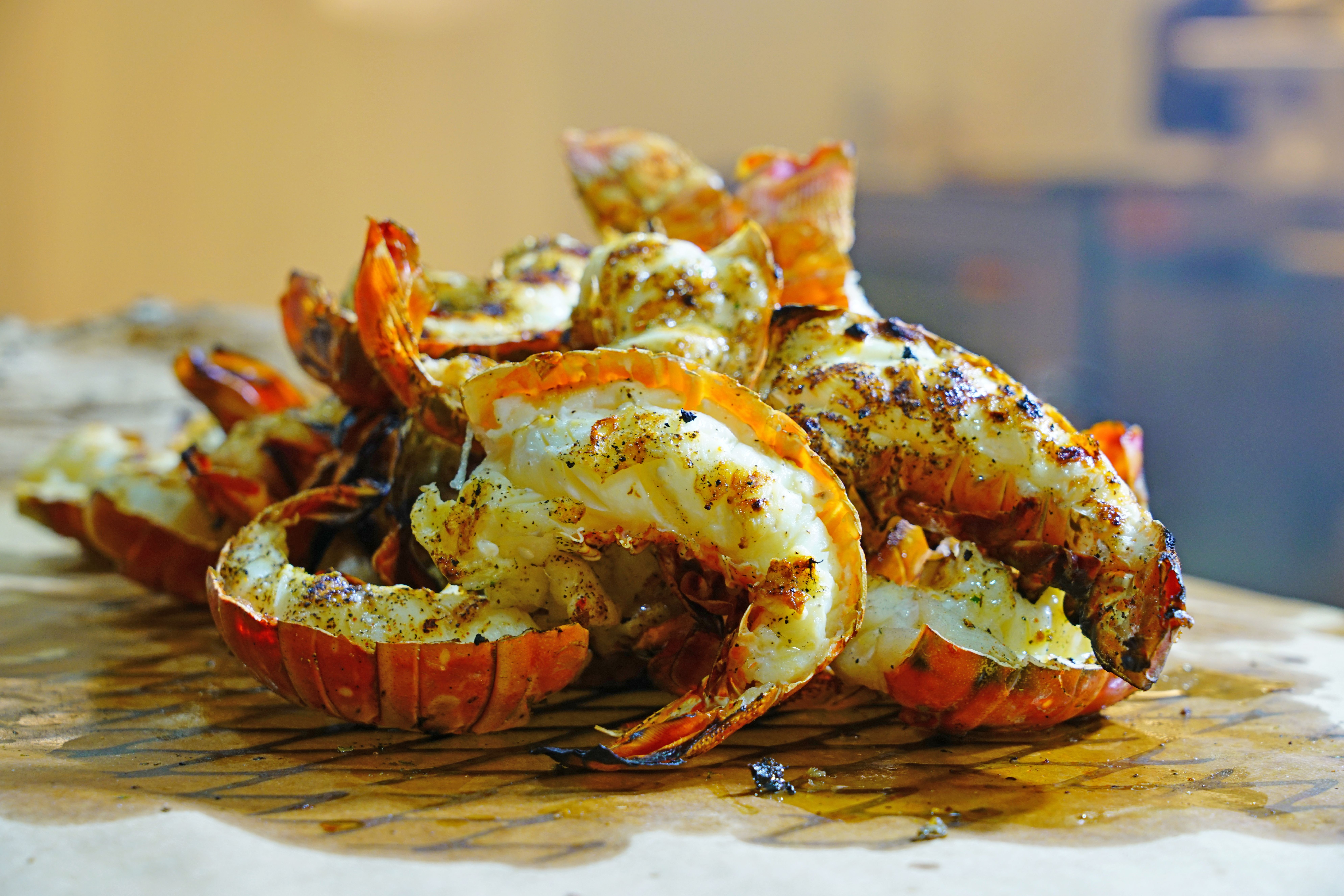Caribbean Spiny Lobster

Species Details
Panulirus Argus
Palinuridae
Decapoda
Coral reefs, Rocky ledges and outcroppings, Seagrass beds, Mangrove roots, Sandy bottoms with scattered debris
2 - 5 lbs.
8" - 18"
The Caribbean Spiny Lobster: A Coastal Treasure of the Tropics
This lobster is a vibrant, armor-clad crustacean found throughout the warm, shallow waters of the Caribbean Sea & the western Atlantic Ocean. Unlike its cold-water cousins, this lobster lacks large claws and instead relies on its long, spiny antennae for defense. It hides during the day & forages at night for mollusks, crustaceans, and detritus.
The Caribbean Spiny Lobster (Panulirus argus) is one of the most iconic crustaceans found throughout the warm coastal waters of the Caribbean and western Atlantic. Known for its delicious meat and unique appearance, this species is a staple of tropical marine ecosystems and a critical part of the fishing economy in the region. In this article, we explore where the Caribbean spiny lobster lives, what it eats, how it reproduces, and the best places to find it.
What Is the Caribbean Spiny Lobster?
Unlike its clawed cousins in colder waters, the Caribbean spiny lobster is named for the sharp spines covering its body and its long, whip-like antennae. It is a nocturnal, reef-dwelling crustacean known for its striking coloration—usually a blend of tan, brown, orange, and black.
Where Do Caribbean Spiny Lobsters Live?
These lobsters inhabit shallow marine waters ranging from North Carolina to Brazil, including the Caribbean Sea, the Gulf of Mexico, and the Bahamas.Caribbean spiny lobsters are typically found at depths ranging from 1 to 100 meters (3 to 330 feet) in warm, tropical saltwater environments. They thrive in water temperatures between 20°C and 30°C (68°F to 86°F) and rely heavily on shelter, such as crevices, rocks, and reef structures, to protect themselves from predators. These lobsters are nocturnal, remaining hidden during daylight hours and becoming active at night to hunt and scavenge for food.
Common Habitats:
Coral reefs
Rocky crevices and ledges
Seagrass beds
Mangrove roots
Sandy bottoms with shelter
During the day, Caribbean spiny lobsters hide in crevices or under rocks to avoid predators. At night, they emerge to forage.
What Do Caribbean Spiny Lobsters Eat?
Caribbean spiny lobsters are omnivorous scavengers. Their diet plays an important ecological role in the reef environment.
Their diet includes:
Mollusks (clams, snails)
Crustaceans (small crabs)
Worms
Detritus (dead plant and animal matter)
Algae
This varied diet helps keep reef environments clean and in balance.
Spawning and Life Cycle
Spawning typically occurs in spring and summer, though in warmer regions it can happen year-round. After mating, the female carries thousands of fertilized eggs under her tail for several weeks.
Life cycle stages:
Eggs hatch into planktonic larvae (called phyllosoma)
Larvae drift in open ocean currents for up to 9 months
They eventually settle into coastal habitats and mature into juvenile lobsters
It takes about 2–3 years for them to reach adulthood
Caribbean spiny lobsters migrate in groups during certain seasons, often forming long lines as they move across sandy bottoms—an incredible underwater sight.
Where Can You Find Caribbean Spiny Lobsters?
If you're looking to spot or catch Caribbean spiny lobsters, head to tropical coastlines with coral reefs or rocky terrain. Popular locations include:
The Florida Keys
Bahamas
Cuba
Jamaica
Belize Barrier Reef
Puerto Rico
Yucatán Peninsula (Mexico)
Lesser and Greater Antilles
They are most commonly found at depths between 1 and 100 feet, and are easiest to locate during night dives or snorkeling excursions.
Conservation and Regulations
Due to their commercial value, Caribbean spiny lobsters are heavily fished. Overharvesting and habitat degradation have led to strict regulations in many countries, including:
Closed seasons for spawning
Minimum size limits
Prohibitions on harvesting egg-bearing females
Permit requirements
Sustainable fishing practices are essential to protect this species and maintain its role in the ecosystem.
Culinary Uses
Caribbean spiny lobster is known for its sweet, tender tail meat and is featured in dishes such as:
Grilled lobster tails
Lobster ceviche

Lobster stew or chowder
Butter-poached lobster
Lobster tacos or sandwiches
It’s a highlight of many Caribbean seafood menus.
Final Thoughts
The Caribbean spiny lobster is more than just a culinary delicacy—it’s a vital part of the marine ecosystem and a symbol of tropical coastal life. Whether you're a diver, fisher, or food enthusiast, understanding its habitat, behavior, and life cycle can deepen your appreciation for this remarkable species.







